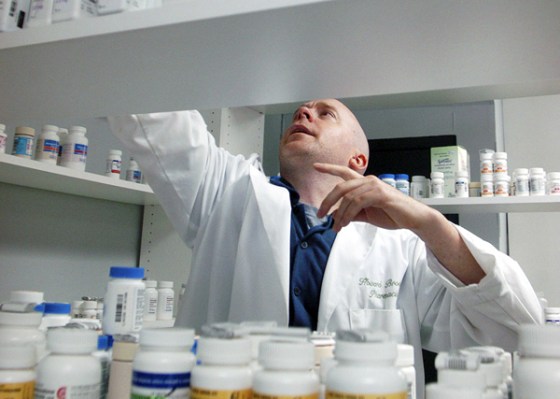It happens all the time:
Doctors dash off a new prescription to start patients on a medication. Could be a blood pressure-lowering drug. Could be pills to help control their type 2 diabetes.
The patient slides the piece of paper into his wallet or slips it into her purse. And there it stays, never to be filled, while the patient’s blood pressure or blood sugar continues to climb.
In fact, according to a new study, perhaps as many as one in four new prescriptions aren’t filled.
Cost and convenience seem to play major roles in determining whether patients actually pick up their newly prescribed medications, the researchers found.
For example:
- Patients who live in high-income zip codes were more likely to fill new prescriptions than those in low-income zip codes.
- People were more likely to get their medication if it was on their insurance plan’s list of approved drugs, resulting in a lower copay.
- And patients were more likely to fill their prescription if their doctor had transmitted it directly to the pharmacy instead of handing it to them.
“There may be plenty of other reasons, such as a poor explanation by the doctor of why the patient should take the medication,” notes lead author Michael Fischer, a health services researcher and primary care doctor at the Brigham and Women’s Hospital in Boston. “Or maybe the patient doesn’t think the problem needs treatment.”
Fischer’s study, published in the November issue of The American Journal of Medicine, found that patients are more likely to fill prescriptions for antibiotics to treat an infection than for medications to lower their high blood pressure, which causes no symptoms.
“It may be that you’re more willing to pay for an antibiotic because you don’t feel so good that day,” he says.
Fischer and his coauthors analyzed prescribing data and filled claims for all patients with CVS Caremark drug coverage who received e-prescriptions from the company’s iScribe system in 2008. That added up to about 280,000 patients in all 50 states and about 425,000 e-prescriptions for new medications. The researchers matched the e-prescriptions with filled claims, allowing up to 180 days for patients to fill their prescription.
Some patients might have filled their prescriptions with $4 generics that didn’t generate a claim, Fischer says, or maybe they paid for the whole thing out-of-pocket. But his study suggests that at least 15 percent of new prescriptions are never filled.
Previous research has focused mainly on whether patients refilled prescriptions of drugs they’d already taken, not whether they filled their first prescription.
Price can be an obstacle in both cases, Fischer says. But people might not refill prescriptions because they don’t like the way the medications make them feel, he says, which doesn’t explain why they don’t fill new ones. In those cases, Fischer says, the problem is more likely to be a lack of information from the doctor on why it’s important to take the drug.
Research by behavioral scientist Antoinette Schoenthaler, an assistant professor of medicine at New York University, supports that notion.
“If doctors would just talk to patients and ask them about their medications and whether they’re taking them,” Schoenthaler says, “we could probably prevent a lot of nonadherence (patients not taking medications as prescribed).”
